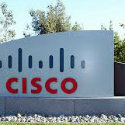Cisco Makes a Play for the Next-Gen Central Office
The evolution of the central office/local exchange has caught Cisco's attention in more ways than one, possibly with a fog networking future in mind.
December 12, 2016

Cisco snuck out an announcement a few days ago that suggests it sees the central office/local exchange facilities that currently house traditional telco gear as playing an important role in the distributed cloud, or "fog networking," architecture of the future.
The vendor announced it has extended its Cloud-Scale Networking proposition "beyond the traditional network" (metro, core, data center) to the central office to meet the emerging transformation requirements of service providers that run such access network facilities. (See Cisco Launches New Products Aimed at Next Gen Central Offices.)
In a nutshell, Cloud-Scale Networking aims to deliver greater levels of automation, software-centric control and real-time visibility to network operators and enable them to take advantage of SDN and NFV capabilities, so Cisco Systems Inc. (Nasdaq: CSCO)'s pitch is all about the "cloudification" of the central office.
There's little doubt that operators want to include their central office/local exchange facilities in their broader virtualization/cloud strategies: AT&T's efforts during 2015 sparked a great deal of interest among other operators that are also aiming to figure out what an integrated telecoms/cloud/IT architecture of the future looks like. (See AT&T to Show Off Next-Gen Central Office.)
Light Reading also believes this is a critical development that needs to be addressed right now -- see Broadband's Multidimensional Shift & Why It Needs to Embrace the Cloud -- and a recent Heavy Reading study (commissioned by Cisco, it should be noted) shows that more than 70% of service providers surveyed have either started to introduce SDN and NFV capabilities into their central offices or are planning to do so.
That process can manifest itself in a number of ways, though. There has been a lot of interest (even from cable operators) in the Central Office Re-architected as Data Center (CORD) development that is now being advanced under the auspices of the Linux Foundation. (See Comcast Becomes First Cable Co to Join CORD & ONOS, CORD Fuels Access Virtualization Push and CORD Gets Its Own Project Status.)
Cisco has long been a partner in the CORD process.
But for many in the industry, CORD offers some blueprints and options that are mostly applicable in new deployment scenarios: Network operators, meanwhile, have large networks of access network facilities that they want to transform without undertaking expensive forklifts. This is the opportunity that Cisco appears to be targeting with its latest announcement -- the vendor is hedging its bets through its involvement with CORD and by offering a migration path that brings existing facilities into the broader software-defined, cloud world.
Light Reading asked Cisco is there was any kind of relationship between the new proposition and its CORD strategy, as they both address network operators with central office transformation ambitions, but the vendor is yet to respond.
Overall, though, Cisco's efforts make sense in terms of its broader view of how networks will evolve in a cloud, IoT and 5G-centric world of fog networking, where the ability to coordinate assets and capabilities from the centralized data center to the edge of the network (central offices, cellular aggregation points) and even further to IoT gateways in an automated, software-defined manner will be critical to next generation service providers. So far, the mobile edge computing debate has dominated the "edge" debate, but in 2017 the transformation of the central office looks set to play a much bigger role in that conversation. (See Will ETSI Lose Its Edge as Fog Rolls In?)
— Ray Le Maistre, 

 , Editor-in-Chief, Light Reading
, Editor-in-Chief, Light Reading
You May Also Like


_International_Software_Products.jpeg?width=300&auto=webp&quality=80&disable=upscale)







